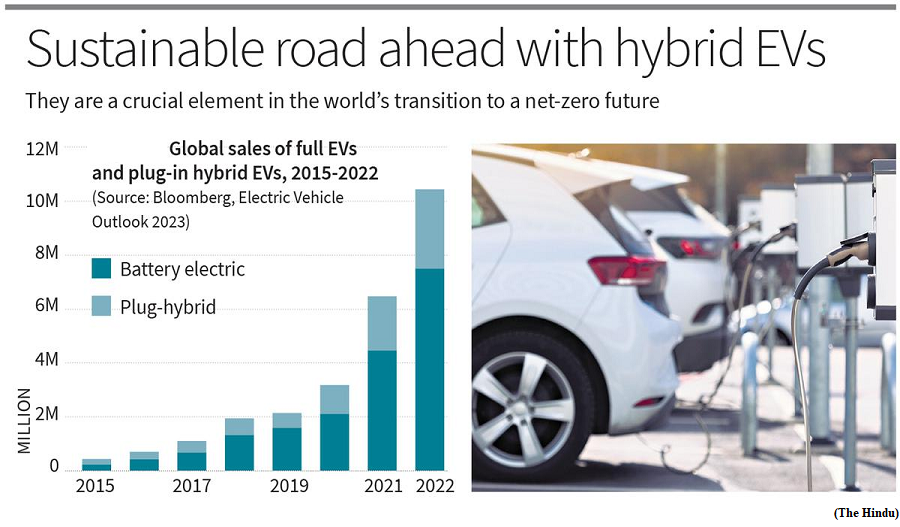Draft National Tourism Policy (GS Paper 3, Environment)

Why in news?
- The Ministry of Tourism has drafted a National Tourism Policy incorporating suggestions received from Central Ministries, State Governments/UT Administrations and Industry Stakeholders.
Key strategic objectives:
- To enhance the contribution of tourism in Indian economy by increasing the visitation, stay and spend and making India a year-round tourist destination,
- To create jobs and entrepreneurial opportunities in tourism sector and ensure supply of skilled work force,
- To enhance the competitiveness of tourism sector and attract private sector investment,
- To preserve and enhance the cultural and natural resources of the country,
- To ensure sustainable, responsible and inclusive development of tourism in the country.
“Adopt a Heritage: Apni Dharohar, Apni Pehchaan”
- Ministry of Tourism, has launched the “Adopt a Heritage: Apni Dharohar, Apni Pehchaan” project for developing tourism amenities at heritage/natural/tourist sites spread across India for making them tourist friendly, in a planned and phased manner.
- It aims to encourage companies from public sector, private sector, trusts, NGOs, individuals, and other stakeholders to become ‘Monument Mitras’ and take up the responsibility of developing and upgrading the basic and advanced tourist amenities at these sites as per their interest and viability in terms of a sustainable investment model under CSR and other funds.
Other initiatives:
- The guidelines for Swadesh Darshan 2.0 envisage encouraging the States for opportunities for Private-Sector and Public-Private Partnerships.
- PRASHAD Scheme provides for PPP mode in only operation and maintenance of the facilities created/to be created under the project.
- Ministry of Tourism has launched the Travel for LiFE Initiative. Travel for LiFE aims to promote sustainable tourism in the country, through mindful and deliberate actions mobilized toward tourists and tourism businesses in the consumption of tourism resources.
- Ministry of Tourism is organizing webinars under Dekho Apna Desh initiative to create awareness among the citizens about the rich heritage and culture of the country, generate a sense of national pride and belongingness among the citizens, and encourage the citizen to travel widely within the country, enhanced tourist footfalls, development of local economy and creation of job at local level.
FDI in Tourism:
- In order to attract foreign investment in the tourism sector, 100% Foreign Direct Investment (FDI) is allowed under the automatic route in the tourism and hospitality industry in India, subject to applicable regulations and laws.
- 100% FDI is allowed in tourism construction projects, including the development of hotels, resorts and recreational facilities.
Parliament Passes Cinematograph (Amendment) Bill, 2023
(GS Paper 2, Governance)
Why in news?
- Recently, the Cinematograph (Amendment) Bill, 2023 was passed by the Parliament after getting the nod from the Lok Sabha.
- It amended the Cinematograph Act after 40 years as the last significant amendments in the Cinematograph Act, 1952 were made in the year 1984.

Piracy:
- The landmark bill aims to comprehensively curb the menace of ‘Piracy’ causing losses of Rs 20,000 Crores to the film industry, based on certain estimates.
- The provisions include strict punishment of minimum 3 months imprisonment and fine of Rs. 3 lakhs which can be extended up to 3 years imprisonment and fine upto 5% of the audited gross production cost.
Mandate:
- The Bill attempts to address the issue of unauthorised recording and exhibition of films and curb the menace of film piracy by transmission of unauthorized copies on the internet.
- The Bill attempts to improve the procedure for certification of films for public exhibition by the Central Board of Film Certification, as well as improve categorisations of the certifications of the films.
- The the Bill attempts to harmonise the law with extant executive orders, Supreme Court judgements, and other relevant legislations.
Key provisions:
- Provisions to check unauthorised recording and exhibition of films amounting to piracy: To check film piracy by way of cam-cording in the theatres; and most importantly also prohibit any unauthorized copying and online transmission & exhibition of a pirated copy of any film, strict penal provisions have been incorporated.
- Age-Based Certification: Introduction of age-based categories of certification by further sub-dividing the existing UA category into three age-based categories, viz. seven years (UA 7+), thirteen years (UA 13+), and sixteen years (UA 16+), instead of twelve years. These age-based markers would be only recommendatory, meant for the parents or guardians to consider whether their children should view such a film.
- Aligning with the Supreme Court Judgements: Omission of Revisional Powers of Central Government as per judgment of Supreme Court in the case of K.M. Shankarappa vs Union of India (2000).
- Perpetual Validity of Certificates: Removal of the restriction in the Act on validity of certificate for only 10 years for perpetual validity of certificates of Central Board of Film Certification (CBFC).
- Change of Category of Film for Television: Recertification of the edited film for Television broadcast, as only Unrestricted Public Exhibition category films can be shown on television.
- Reference to Jammu and Kashmir: Omission of references to the erstwhile State of Jammu and Kashmir in line with the Jammu and Kashmir Reorganisation Act, 2019.
Way Forward:
- The Indian film industry is one of the biggest and most globalised industries in the world producing more than 3,000 films annually in more than 40 languages.
- The Cinematograph (Amendment) Bill, 2023 was passed by the Parliament today will go a long way in curbing the menace of piracy and also empowerment of Indian Film Industry with Ease of Doing Business.
The hybrid EV imperative
(GS Paper 3, Science and Technology)
Context:
- A crucial element of the world’s transition to becoming net-zero is electric vehicles (EVs).

What is net-zero for a vehicle?
- Net-zero for a vehicle includes emissions at both the tailpipe of the vehicle and at the power plant. Making vehicles net-zero requires cutting emissions from both new and existing vehicles.
What are the different types of EVs?
- Any vehicle propelled by an electric drivetrain, taking electric power from a portable, electrical energy source, is called an Electric vehicle (EV).
- In a hybrid EV, an internal combustion engine (ICE) is used to produce electricity with an electrical generator. A small battery, typically 1-5kWh, is used in a hybrid EV as an energy buffer to store the electricity.
- The battery can’t be charged from the grid.
- A full EV – a.k.a. a battery EV or a plug-in EV, has no ICE and hence no tailpipe emissions. The battery typically is much larger at 20-120 kWh. And it can only be charged from the grid.
- A plug-in hybrid EV is still a hybrid EV with a much larger battery, typically 5-15 kWh. This larger battery can also be charged from the grid. This means a plug-in hybrid operates like a fully electric vehicle as long as there is energy in the battery.
- A fuel-cell EV uses a fuel cell to produce electricity for the drivetrain together with a small battery buffer to manage variations.
What is the fuel economy of hybrid and fully electric EVs?
- The use of an ICE in combination with a generator and battery in a hybrid EV results in the fuel economy of these vehicles being 1.5-2x times higher than in conventional ICE vehicles for city driving and 1-1.5x times higher for highway driving.
- A plug-in hybrid EV combines the best of both hybrid and full EVs.
- Using a small battery (5-15kWh) that can be charged from the grid, it can cover 80-90% of all short, day-to-day commutes in a fully electric mode with 3-4x higher fuel economy than conventional vehicles. A driver on intercity trips can switch to the hybrid mode.
What are the net emissions of hybrid EVs?
- Apart from fuel economy, an important metric is the net emissions of a vehicle. Well-to-wheel emissions include both tailpipe emissions and emissions due to fuel production, electricity or fossil fuels.
- The life-cycle emissions is a more comprehensive index that includes well-to-wheel emissions and emissions due to vehicle and battery production, maintenance, and end-of-life recycling.
- The grids of different countries are decarbonised to different extents at present.
- In the case of full EVs: the lower the emissions from power production, the lower the vehicle’s well-to-wheel and life-cycle emissions.
What are the challenges to transitioning to electric mobility?
Fast-charging infrastructure:
- A successful transition to full EVs requires fast-charging infrastructure along highways. The lack of a fast-charging infrastructure will discourage people from buying full EVs. Fast-charging means power levels of 50-350 kW for cars and up to 1,000 kW for heavy-duty vehicles.
- The high cost and wide variation are due to the high-capacity power connections required, the cost of making and installing a new transformer and cables; service-level agreements; DC charger plug options and quantities; customisation costs; labour costs; and permits.
Access to grid:
- Many parts of the world, especially economically developing nations, don’t yet have access to a grid or the grid isn’t 100% reliable.
- The relatively high charging power for slow-charging (<22kW) and fast-charging (<350kW) make the problem more prominent vis-à-vis generation and transmission capacities. This in turn could retard the transition to EVs.
How can hybrid or plug-in hybrid EVs help decarbonise?
- The current focus in the industry is on full EVs, which isn’t practical for the immediate future, given grid reliability, state of highway charging infrastructure, and prohibitive vehicle costs.
- The 1.5-2x higher fuel economy of hybrids and 3-4x higher fuel economy of plug-in hybrids in electric mode drastically reduces fuel costs, emissions, and oil imports.
- Plug-in hybrids in particular can match several (but not all) of the benefits of full EVs vis-à-vis emissions and performance without requiring large batteries. With a limited all-electric range, this may not cater to all use cases, such as taxis.
- Regenerative braking in hybrid EVs – i.e. recovering the kinetic energy of the vehicle while slowing down instead of dissipating it as heat in the braking system can improve fuel economy esp. in urban areas with frequent stop-go conditions and in hilly conditions.
- An engine start-stop mechanism can also save fuel at traffic junctions and in heavy traffic.
- Finally, the purchase price of hybrid cars is only 5-15% higher than conventional vehicles and is independent of the vehicle range.




